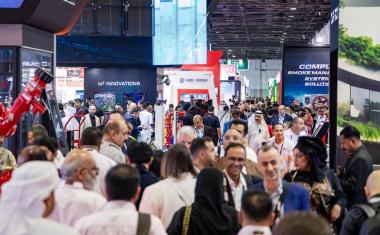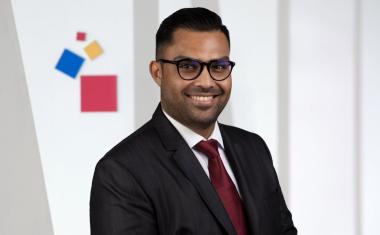EUSAS-Euralarm Conference Focussing on Aviation Safety and Security
EUSAS and Euralarm, hosted by Airbus, recently organised their second joint conference, which was this year on the topic of aviation safety and security. It showed once again the i...
EUSAS and Euralarm, hosted by Airbus, recently organised their second joint conference, which was this year on the topic of aviation safety and security. It showed once again the importance of technological development for an industry endeavoured to protect lives with a particular relevance to the aeronautics and air transport sectors.
The US Federal Aviation Administration reports yearly over 100 false fire alarms on airplanes, resulting in unplanned landings and turn-backs. The consequences for passengers, airlines’ reputations and managing flight routes make the issue of false alarms a priority for the companies providing fire detection devices for airplanes – and this is just one example of the challenges of safety and security on airplanes. Several organisations and companies gathered for two days on July 11th and 12th in Bremen, the second-largest Airbus site in Germany, where airplanes’ wings and fuselages are manufactured. Airbus, the biggest aeronautics and space company in Europe and a worldwide leader in the sector, was the host of a series of lectures and presentations on fire detection, fire suppression, evacuation and security in the aviation sector. This event was jointly organized by the European Society for Automatic Alarm Systems (EUSAS), a group connecting academia and industry, and Euralarm, which represents the European fire safety and security industry.
Fire Detection and Extinguishing in Airplanes, Airports and Aviation Industry
The event addressed the special challenges of fire detection and extinguishing in airplanes, airports and in the aviation industry. From the depleting extinguishing agent reserves worldwide, to the large number and sheer size of airport buildings and hangars, which require specific solutions on top of traditional fire detection technologies. Further are the financial and time constraints for compliance testing in an industry where efficiency and safety are a must. The criteria used for fire detection testing on airplanes are stringent. Detection systems must provide an indication to the flight crew within one minute after the start of a fire, but also be highly resistant to false-alarms. This has led the aviation industry to ask for the most advanced technologies to be used on aircrafts: such as multi-wavelength, multi-scattering angle photoelectric detection, a field at the edge of applied physics, and which was presented by Kenneth Bell, from UTC Aerospace Systems.
Another issue for the industry is the replacement of Halon, a gas that has a high global-warming factor and attacks the ozone layer in our atmosphere. This fire suppression agent is used in cargo compartments, as well as for turbine fire due to its favourable characteristics. The production of Halon has now been discontinued and stocks of recuperated gas are rapidly declining. While Terry Simpson and Edda Liu from UTC Aerospace Systems presented the overall current progress on the replacement of Halon for fire extinguishing and suppression, Dr. Jan Boris Philipp, from Diehl Aviation, in Germany, presented an alternative green fire suppression system manufactured by his company.
Real Life Testing
Many solutions presented at the conference were based on computer simulations. Real life fire extinguishing tests on airplanes are part of the certification process of new airplanes. To avoid environmental consequences, a newly developed simulation technique presented by Airbus’ Dr. Konstantin Kallergis, can now predict the fire suppressant’s behaviour inside the cargo compartment. Another illustration was the research project Orpheus, financed by the German federal government, which was presented by Dr. Lukas Arnold, from the Institute of Advanced Simulation in Jülich, near Cologne. It allows the computer-simulated modelling of an airport’s evacuation, as well as smoke spread prediction in case of fire. The evacuation test concept of an A380 aircraft was impressively shown by Wolfgang Moeller from Airbus: all 850 passengers and crew members could escape the aircraft in significantly less than 90 seconds.
On the topic of airports and hangars, the width and height of the buildings is generally the main problem, as was explained by Securiton’s Stefan Brügger. Automation and integration of electronic safety and security solutions presented by Maarten Wings from Bosch, while Roland Voraberger from g+m elektronik, a company in Switzerland, provided a concrete example for the connection of voice alarm systems to fire alarm systems, which is not as straightforward in airports as it would be in smaller buildings. The challenges of fire detection in buildings with high-ceilings, which is a case for most modern terminals, or half open hangars could be overcome in the future with video-based detection technologies or thermal radiation-based fire detectors, presented respectively by Soeren Wittmann from Bosch and Dr. Simon Trippler together with Dr. Jörg Kelleter from GTE Industrieelektronik. Video is, of course, also useful when it comes to security with video analysis against intrusion in security zones being presented by Securiton’s Thomas Hermes and Michael Seidl, from the Frankfurt Airport, the busiest in Europe by cargo traffic.
Finally, in a demonstration that stand-out by its focus on a non-technology related topic, Dr. Sebastian Festag, representing Germany’s electronic industry association ZVEI, explained the concept of Adaptive Escape Routing Systems and shows why human behaviour is of major significance in an optimised evacuation and guidance strategy.
The solution to fire and security challenges in aviation clearly lies in cutting edge technologies and research on fire safety and security, as well as in the standards, which sometimes lag behind the technology. Dr. André Freiling, from Airbus, a speaker at the event, noted that some standards used to testing smoke detection in aircrafts for example can date as far back as 1994.














